The West Country English city of Bristol is not one of the most well known in Europe, however, it is a vibrant and rapidly flourishing metropolis that has a plethora of exciting prospects for all types of visitors.
One of the primary reasons that Bristol is on people’s radars, is that is it a hub of alternative art and culture, with its lively and colourful neighbourhoods that are adorned with bright and quirky buildings, funky cafes, bars and restaurants, and unique and fascinating street art.
The city also has a more industrial side to it, which also brings with it a long and expansive history, with its multitude of docks and waterways.
Away from all of the modernity and hustle and bustle of Bristol city centre, there is also a large expanse of outdoor area on the outskirts of the city, including vast amounts of leafy suburbs, that are dotted with fascinating historic castles, that offer visitors a different side to the area.
This list will highlight the best castles that are near Bristol, including those that are close by, and slightly further afield; it will note their key points of interest, as well as practical information, such as location, and opening and closing times.
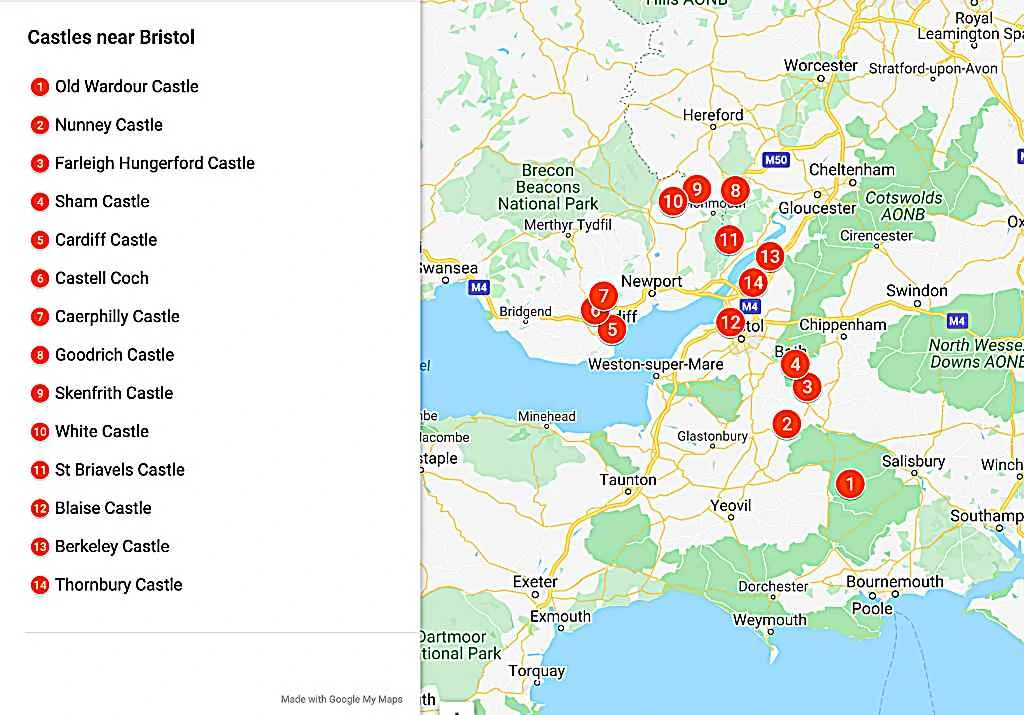
14 Best Castles To Visit Near Bristol
1. Old Wardour Castle
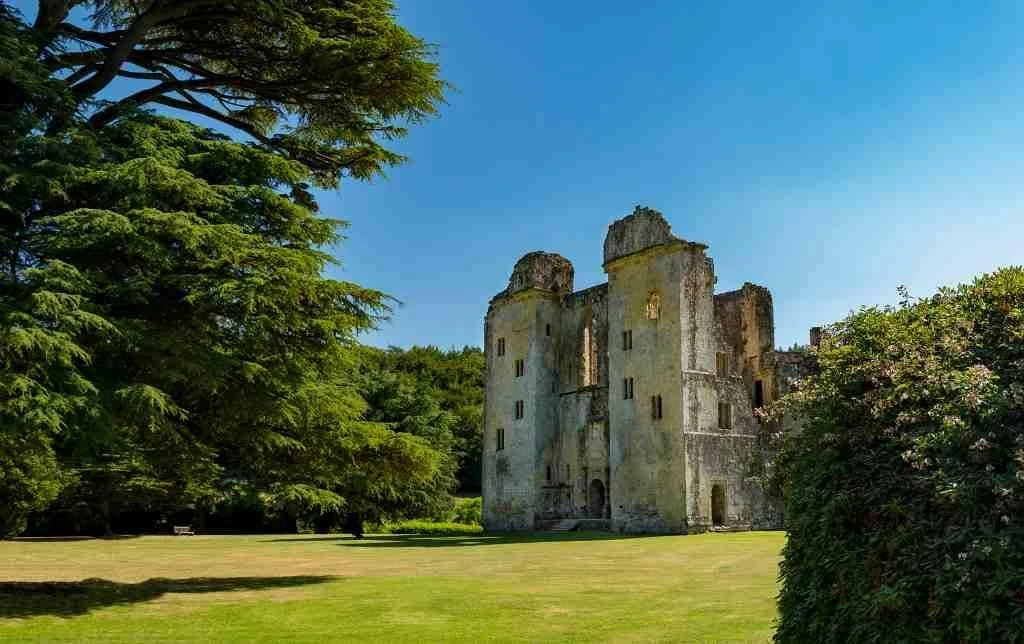
Situated in Wardour, which is located in the beautiful English county of Wiltshire, lies the stunning Old Wardour Castle. This castle was initially built in the 14th century upon the land that was historically owned by the St Martin family, though it was later given over to the fifth Baron Lovell, John, though the reasons behind this are unknown.
At this point, the castle was modernised and expanded and was heavily inspired by French hexagonal castles. During the Middle Ages, the castle fell from the hands of the Lovell family during the famous Wars of the Roses, and it switched hands several times before it was acquired by Sir Thomas Arundell of Lanherne in 1544.
Over the years, the castle has been divided into the old, historic castle, and a New Wardour Castle, that was built during the 17th century and emulates the neoclassical country house style. In more recent times, the castles have appeared in several famous films, including ‘Robin Hood: Prince of Thieves’, that starred Kevin Costner.
Where: Wardour, Wiltshire, England
When: 14th century
Style: Medieval and Neoclassical
Open for visit: Yes, check here for more information.
2. Nunney Castle

Nunney Castle is a beautiful medieval castle located in Nunney, in the scenic English county of Somerset, which is just a short distance away from Bristol.
The castle was originally constructed at the end of the 14th century by Sir John Delamare, who was one of King Edward III’s Knights; Delamare established the castle based upon his profits that derived from his involvement with the Hundred Years War, and Nunney Castle was constructed in line with the principles of French architecture and castles.
Later, during the 16th century, the castle had been remodelled, though it was heavily damaged in the midst of the violent and brutal English Civil War, and has been a ruined site ever since.
Today, the castle is owned and maintained by English Heritage, and it functions primarily as a tourist attraction; it is open to the public and is hugely popular both for its fascinating history and the stunning grounds in which it is located.
Where: Nunney, Somerset, England
When: 14th century
Style: Medieval
Open for visit: Yes, check here for more information.
3. Farleigh Hungerford Castle

Farleigh Hungerford Castle, or sometimes just known as Farleigh Castle, or Farley Castle, is a beautiful and historical medieval castle located in the scenic Somerset village of Farleigh Hungerford.
This castle was built in two key phases, firstly, the inner court of the castle, which was established between the years 1377 and 1383, by Sir Thomas Hungerford, and the rest of the castle was constructed after this time frame.
The castle stayed in the hands of the Hungerford family for the following two centuries after they initially acquired it; it was heavily modernised into contemporary Tudor and Stuart styles after the English Civil War began in 1642, and it was, the following, seized by Royalist forces.
Over the following centuries, the castle fell into disrepair and ruin, until the 18th and 19th centuries, where renewed interest in line with Antiquarian principles resulted in the castle becoming a tourist attraction, which it still is today; now, the castle is a Grade I listed building.
Where: Farleigh Hungerford, Somerset, England
When: 14th century
Style: Medieval
Open for visit: Yes, check here for more information.
4. Sham Castle
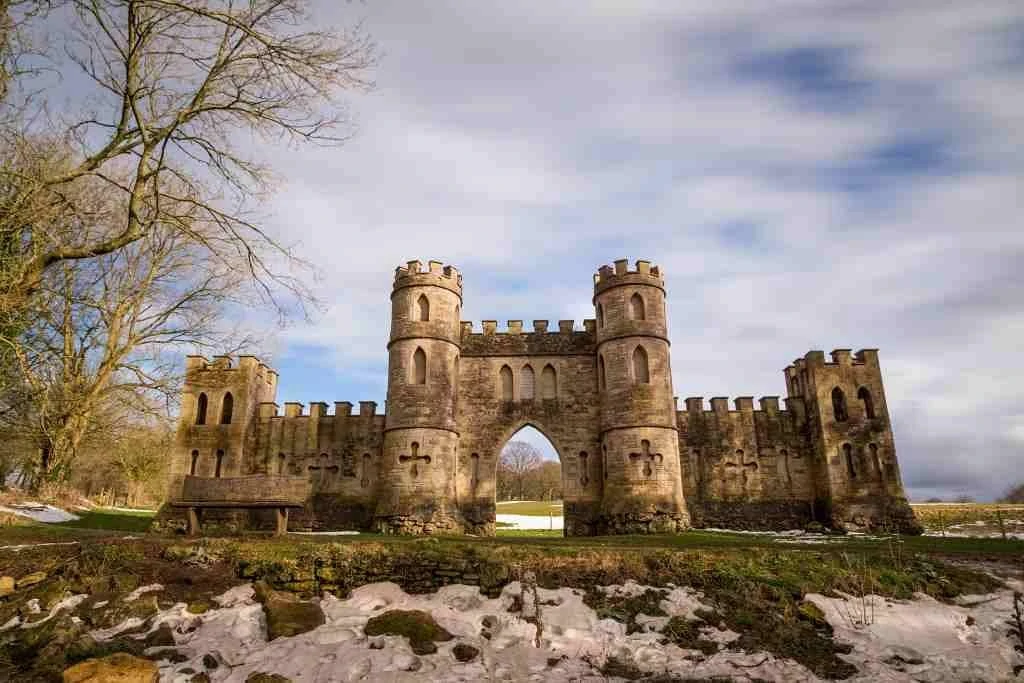
Towering above the city of Bath in England, which is just a stone’s throw away from Bristol, lies the stunning sham Castle, which is located upon the picturesque Claverton Down.
Little is known about the specific history of the Sham Castle, though it is believed to have been designed in the year 1755, by Sanderson Miller, who was a prominent individual in the revival of the Gothic architecture movement of the 18th century; it was eventually built the following decade, in the year 1762, by Richard James.
Today, the castle is a Grade II listed building, and it is incredibly well-preserved for its age and has some beautiful Gothic features, including its dramatic archways, windows and turrets, that transport visitors back to a time gone by.
This is a fantastic place to visit if you are based in either Bath or Bristol, in order to temporarily escape the hustle and bustle of the city, and uncover another side to the history of the area.
Where: Claverton Down, Somerset, England
When: 18th century
Style: Gothic revival
Open for visit: Yes.
5. Cardiff Castle
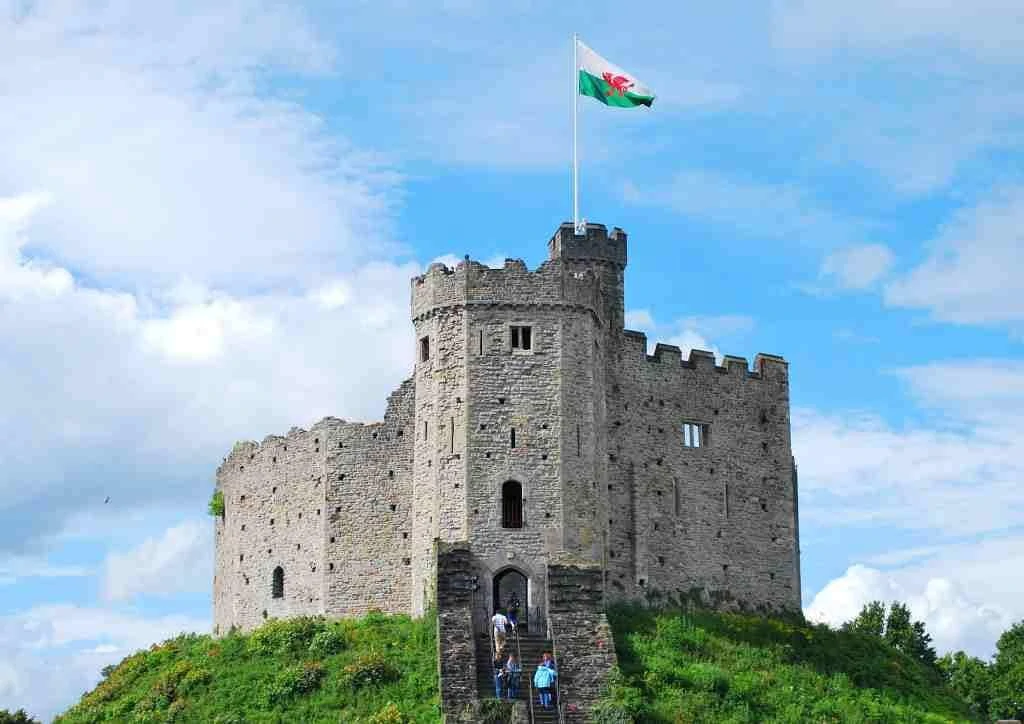
Located right in the city centre of Cardiff, Wales, which is not too far away from Bristol, lies the impressive and famous Cardiff Castle, which is a stunning structure that boasts a multitude of architectural styles, including Medieval and Victorian Gothic revival, and has a fascinating expanse of history attached to it.
The original castle that was built on the site, was a motte and bailey structure that dates back to the 11th century and was constructed by Norman invaders, on top of the foundations of a 3rd-century Roman fort that existed there originally.
The castle was established upon the decree of the famous William the Conqueror, and it was later rebuilt in stone, during the 12th century by Robert of Gloucester, in order to strengthen its defensive walls and modernise it to contemporary requirements.
Today, the castle is a great place to visit, whether you are staying in Cardiff or Bristol, as its position in the city centre in incredibly unusual, yet equally fascinating.
Where: Cardiff, Wales
When: 11th-century origins
Style: Medieval and Victorian Gothic Revival
Open for visit: Yes, check here for more information.
You might also like the best castles near Cardiff.
6. Castell Coch

Built above the scenic village of Tongwynlais in the South of Wales lies the stunning Castel Coch, which is built in the 19th century Gothic Revival architectural style, though an earlier castle existed on the site before the current one; this castle was constructed after the year 1081 by the Normans, as a means of protecting the then town of Cardiff, which had been recently conquered.
Over the following centuries, after years of military conflict and battle, the castle fell into disrepair and was left abandoned. However, in the year 1848, John Crichton-Stuart, the 3rd Marquess of Bute inherited the castle, and he employed the prestigious architect William Burger to reconstruct the castle in line with antiquarian principles, which were hugely prominent at the time.
Today, the castle is viewed as one of the most impressive and triumphant examples of High Victorian interiors and works of renovation in the country, and it is incredibly popular to this day.
Where: Tongwynlais, Wales
When: 19th century
Style: Gothic Revival
Open for visit: Yes, check here for more information.
Check out my post about the best English castles to visit.
7. Caerphilly Castle
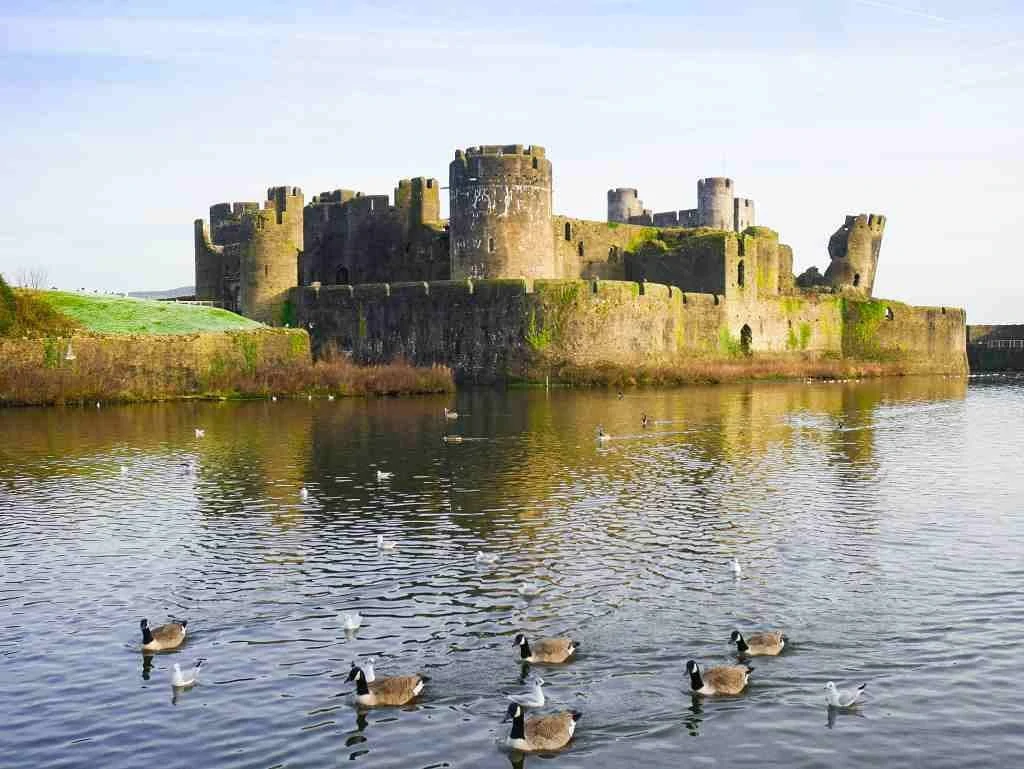
Caerphilly Castle is a stunning medieval fortification located in the town of Caerphilly in South Wales, which is just a short distance away from the city of Bristol. It was initially built between the years 1268 and 1290 by Gilbert de Clare, who was a prominent and powerful English nobleman; the castle was established as part of Clare’s campaign to invade and conquer Glamorgan.
The castle was incredibly powerful and well-fortified, as it was enveloped by large artificial lakes, and occupied a massive total area of 30 acres, which put it as the second-largest castle in the entirety of the United Kingdom.
A key reason why Caerphilly Castle is so famous is due to it having introduced concentric castle defences to the country, which have become quintessential to medieval architecture.
Since the 21st century, the castle has been managed by the Welsh heritage agency, Cadw, and has since been used as a tourist attraction; it is also a scheduled protected monument, and a Grade I listed building and is often used for wedding ceremonies.
Where: Caerphilly, Wales
When: 13th century
Style: Medieval
Open for visit: Yes, check here for more information.
8. Goodrich Castle

Goodrich Castle is a fantastic example of Norman medieval castle located in the scenic and idyllic village of Goodrich, that is located in the county of Herefordshire in England.
The castle is believed to have been built by Godrich of Mappestone after England was invaded by the Normans; it was originally established as earth and wooden structure, though in the 12th century, it was rebuilt as a stone keep, and then was later expanded during the 13th century, into a contemporary concentric structure.
Goodrich Castle was a very powerful and influential castle, both with regards to its residents, and its architecture, that influenced the style of many other English castles during the Middle Ages.
The castle fell to ruin during the 17th century, and throughout the 18th century, the castle became the subject of many paintings and poems, including William Wordsworth’s poem ‘We Are Seven’, that was published in the year 1798. Today, the castle is open to the public and is owned by English Heritage.
Where: Goodrich, Herefordshire, England
When: 11th century
Style: Medieval
Open for visit: Yes, check here for more information.
9. Skenfrith Castle
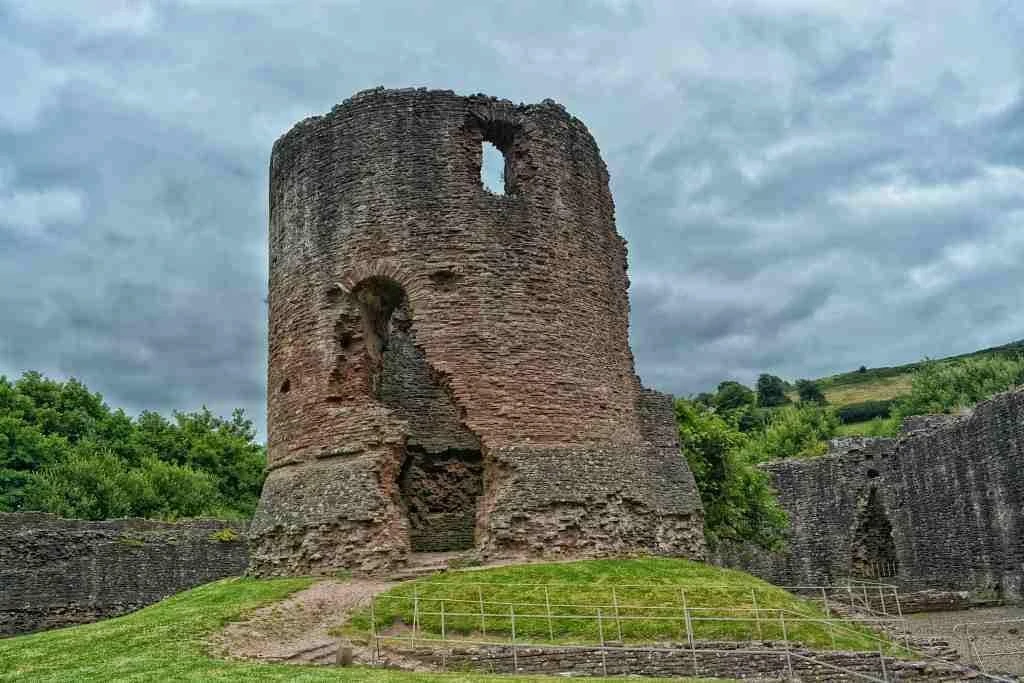
Situated in the beautiful Welsh village of Skenfrith in Monmouthshire in Wales lies the incredible ruins of Skenfrith Castle.
The castle was first founded after the Norman invasion of England in the year 1066, and held the purpose of protecting and defending the route from Wales to Hereford; though it is not certain, it is believed that the castle was commissioned by William Fitz Osbern, the Earl of Hereford.
The castle became part of a string of castles known as ‘The Three Castles’ in the year 1135, after King Stephen combined it with Grosmont Castle and White Castle, to create a series of strongholds in response to an enormous Welsh revolt.
In the early 19th century, the Three Castles were purchased by Henry Somerset, who was the Duke of Beaufort, and it was later given to the National Trust, and has since been protected under the UK law, and is listed as a Grade II listed building.
Where: Skenfrith, Monmouthshire, Wales
When: 11th century
Style: Medieval
Open for visit: Yes, check here for more information.
10. White Castle
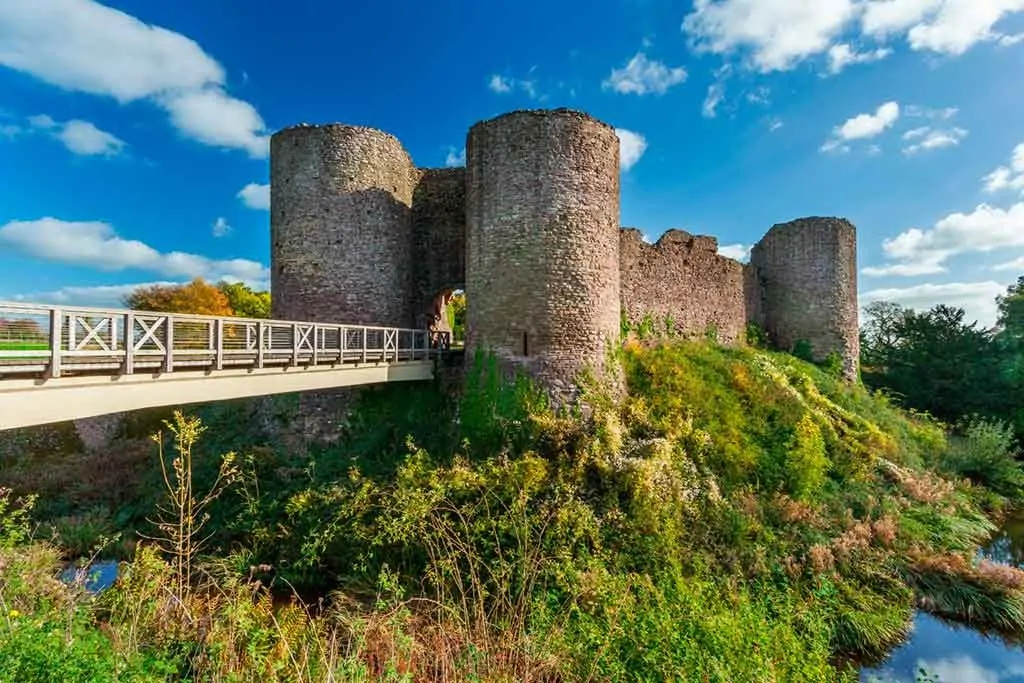
Like Skenfrith Castle, White Castle was also one of ‘The Three Castles’ and was built as a result of the Norman Invasion of England in the year 1066.
The castle is scenically perched upon a hill near to the village of Llantillio Crossenny, and offers breath-taking and awe-inspiring views of the surrounding landscape and scenery; the castle that exists today dates back primarily to the 13th century and has a complex but nonetheless impressive architecture.
In the 13th century, specifically the year 1267, Edmund, who was the Earl of Lancaster was granted the Three Castles, and they remained held by the Earldom for a long stretch of time.
In the year 1282, under the decree of King Edward I, a significant portion of White Castle’s military function was removed, and its role changed to that of administration for the surrounding manor. Today, the castle is open to the public and is a great spot to spend the day exploring.
Where: Llantillio Crossenny, Monmouthshire, Wales
When: 13th century
Style: Medieval
Open for visit: Yes, check here for more information.
11. St Briavels Castle
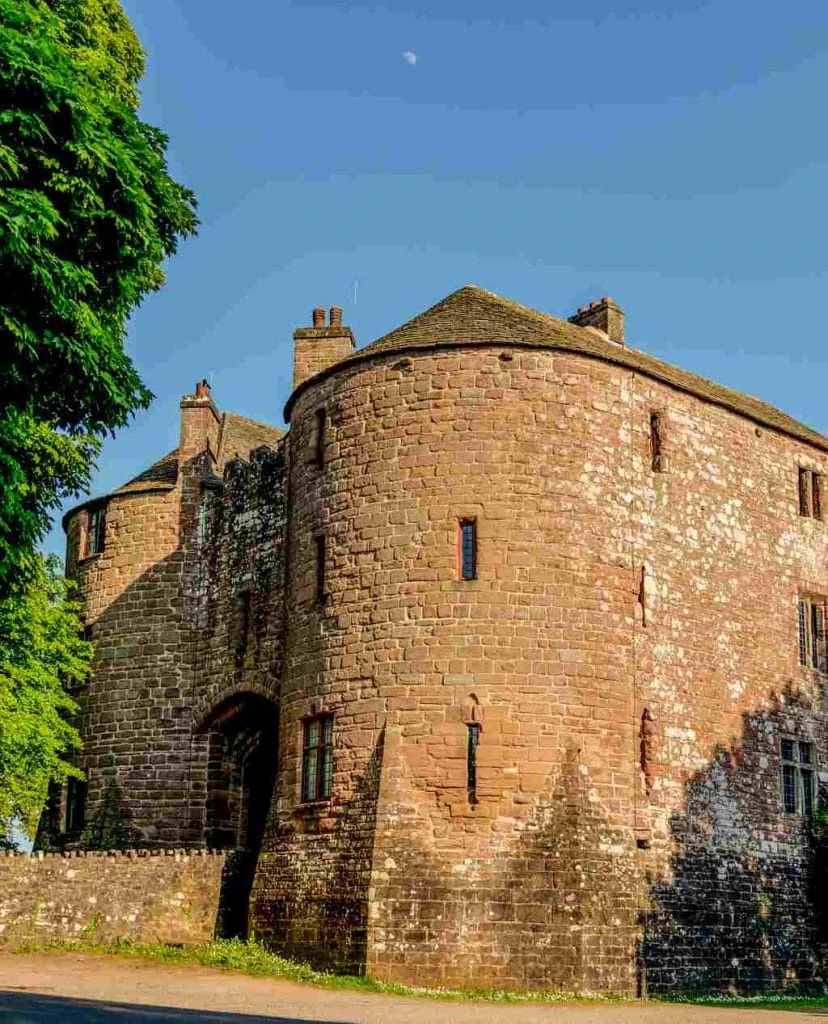
Situated in the heart of the English country of Gloucestershire lies the impressive St Briavels Castle, which is a historic moated Norman castle.
It is believed that the castle was constructed between the years 1075 and 1129, with the purpose of being a royal administrative centre for the Forest of Dean, which is an enormous area of the county.
Later, in the 13th century, the castle transformed its role into that of a hunting lodge, primarily for the use of King John, before becoming a critical centre for the manufacturing of weaponry such as quarrels and crossbows.
However, during the 14th and 15th centuries, the castles prominence gradually dwindled out, and it slowly declined; its function changed to that of a court, as well as a prison for debtors.
In the 20th century, the castle was renovated into a Youth Hostel in the year 1948 and is today owned by English Heritage, who opened it up to the public as a tourist attraction.
Where: St Briavels, Gloucestershire, England
When: Origins in the 11th and 12th centuries
Style: Medieval
Open for visit: Yes, check here for more information.
12. Blaise Castle Estate

Built near to Henbury, which is a suburb of the city of Bristol, lies the gorgeous and impeccably well-preserved Blaise Castle Estate, which included several buildings, including an 18th-century folly, which is an architectural structure that holds the purpose primarily of being decorative.
The caste is part of a larger estate which is also home to the Blaise Castle House, which is a large 18th-century mansion that is a Grade II listed building.
The Blaise Castle Estate occupies an enormous 650 acres, which is mostly open to the public; the grounds were established by Humphry Repton in the 18th century, who added an array of spectacular and grand features, such as the carriage drive which travels from the house, winding all through the landscape to different locations; this driveway in its original form it’s still in existence to this day.
The Blaise Castle Estate is the perfect day trip from the city of Bristol, as it feels a world away from the hustle and bustle of the modern city; there is also so much to see and explore and to capture the imagination.
Where: Henbury, Somerset, England
When: 18th century
Style: Gothic
Open for visit: Yes, check here for more information.
13. Berkeley Castle
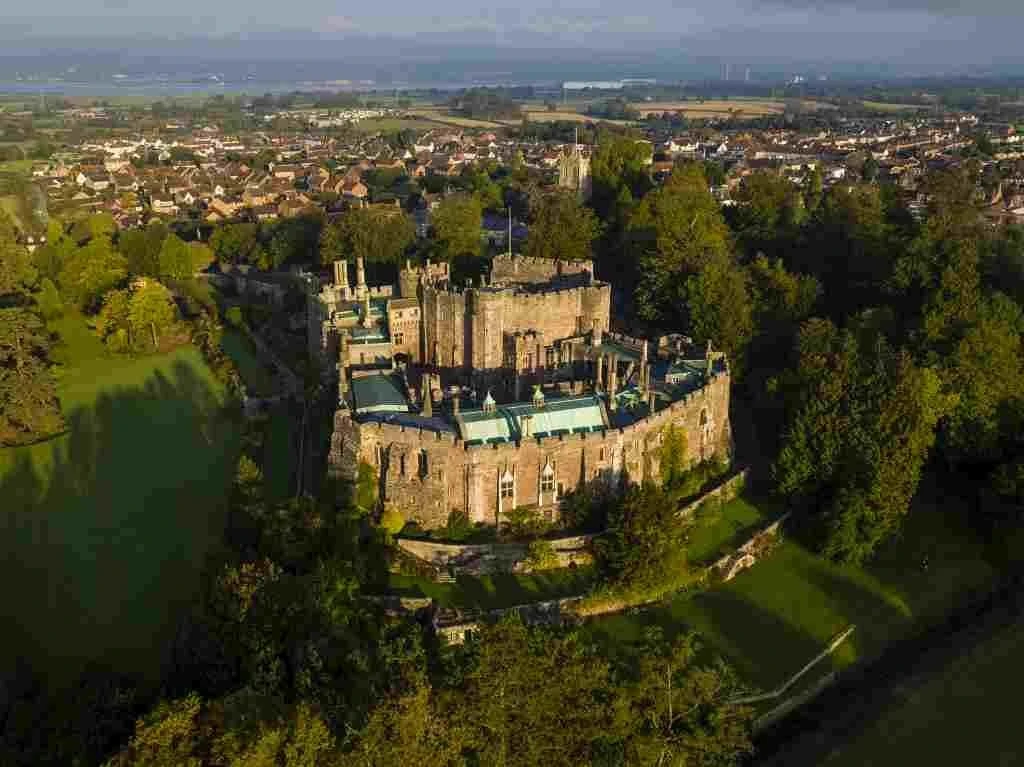
Located in the beautiful town of Berkeley in Gloucestershire, England, is the fantastic and impressive Berkeley Castle, which seems that it has jumped straight out of a fairy-tale story.
The castle’s heritage dates back to the 11th century, where the first castle by William Fitz Osbern in approximately the year 1067, shortly after the Norman Conquest of England, which entirely changed the way the country was run and organised.
Since the 12th century, the castle has remained in the hands of the Berkeley family, who were a prominent aristocratic English family, who had the castle largely reconstructed in the 12th century; it has remained in their control, aside from a brief period of royal ownership by the Tudor family.
One of the key reasons in which this castle is so famous, apart from its impressive architecture and stunning grounds, it is believed to be the site in which the murder of King Edward II in the year 1327 is to have taken place, which has intrigued visitors for centuries; since 1956, the castle has been open to the public.
Where: Berkeley, Gloucestershire, England
When: 11th century
Style: Neo-Gothic
Open for visit: Yes, check here for more information.
14. Thornbury Castle
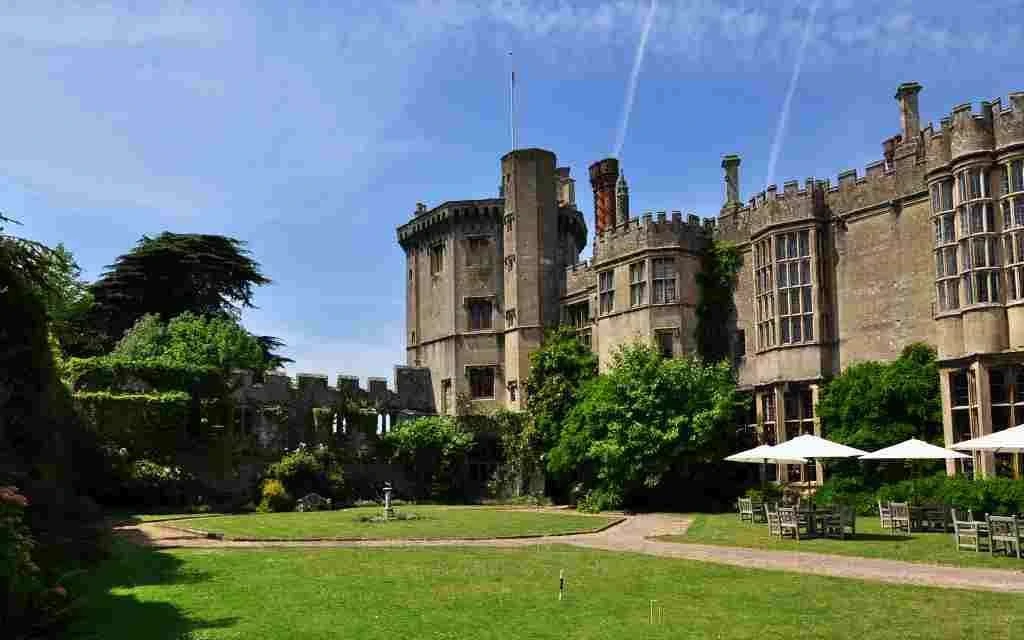
Located in the idyllic parish of Thornbury in the English county of Gloucestershire, which is near to Bristol, is the stunning Thornbury Castle. Construction of this castle dates back to the year 1511, with the purpose of being a residence for the 3rd Duke of Buckingham, Edward Stafford, of Stafford Castle in Staffordshire.
Thornbury Castle was never built for having a military function, but rather to be an example of Tudor architecture, and it represents quintessential appearances of the time, and is a stereotypical country house, with few defensive features.
Today, the castle has been renovated into a luxury hotel, that boasts 26 impressive rooms, as well as a gorgeous restaurant; it is also frequently used as a wedding reception venue. It is also a Grade I listed building and has some of the most beautiful grounds in the county.
Where: Thornbury, Gloucestershire, England
When: 16th century
Style: Tudor
Open for visit: The castle is only accessible if you are visiting the hotel or the restaurant, or if you are attending a wedding.
Check here for more castle hotels in England.
